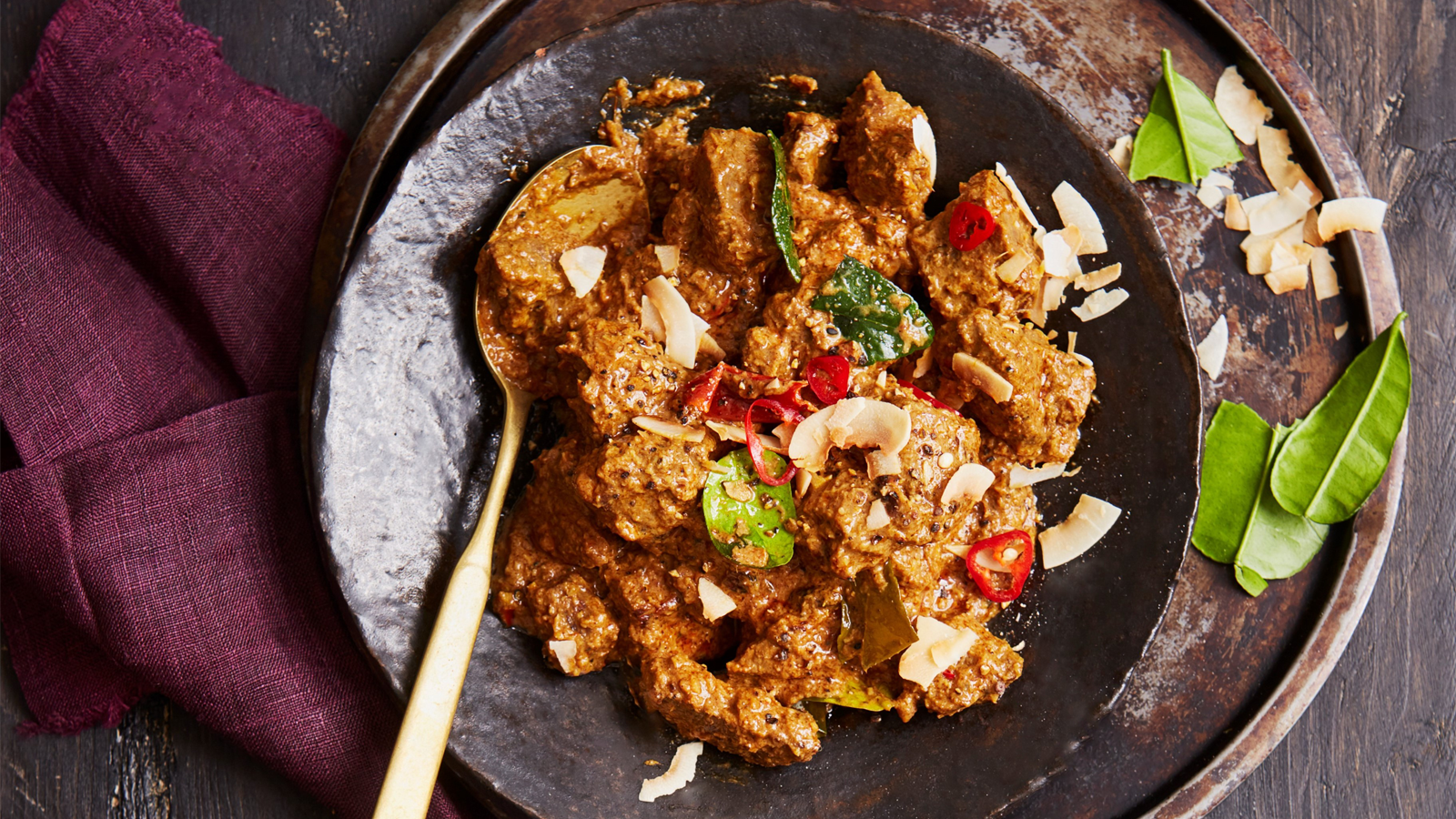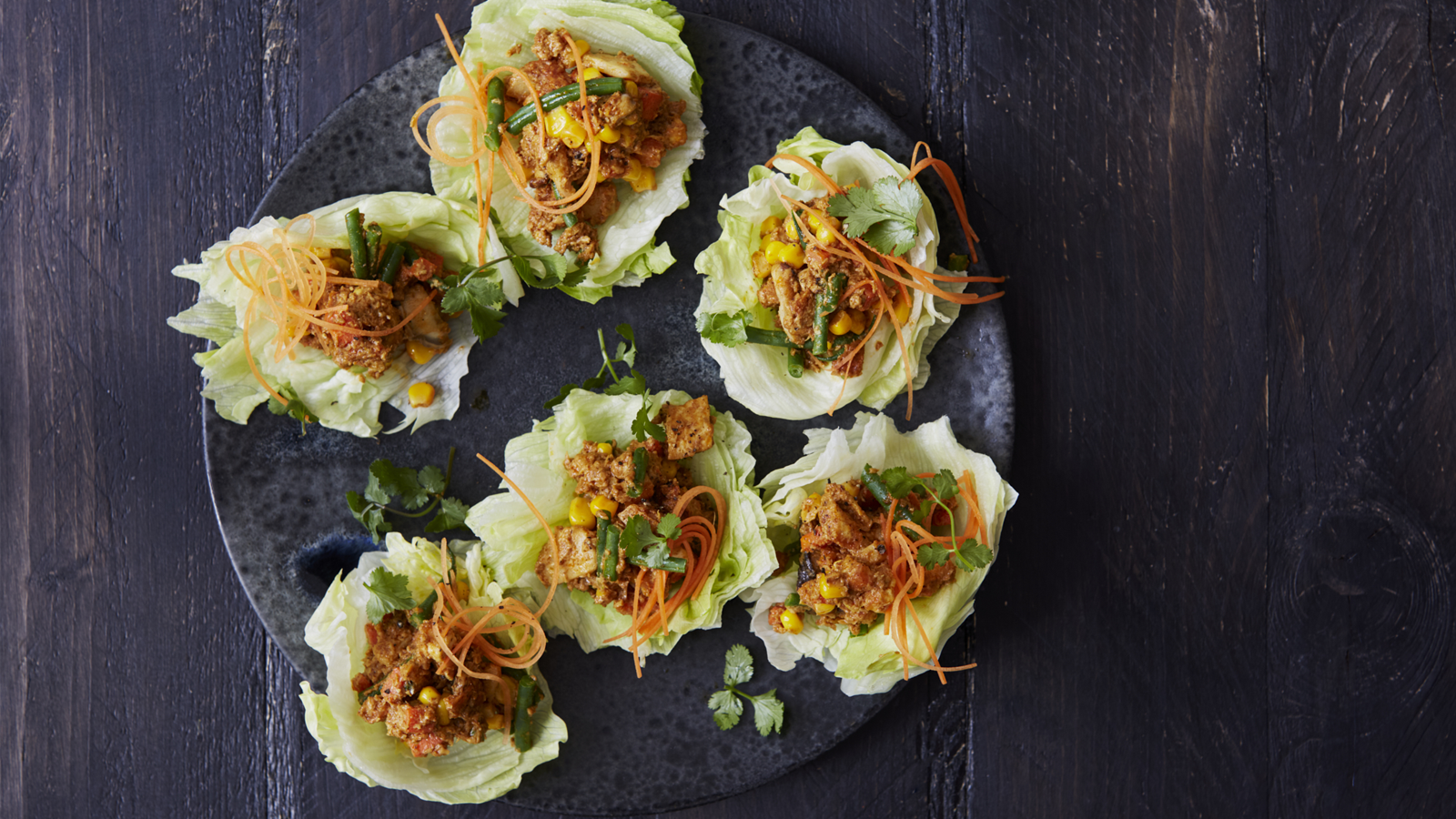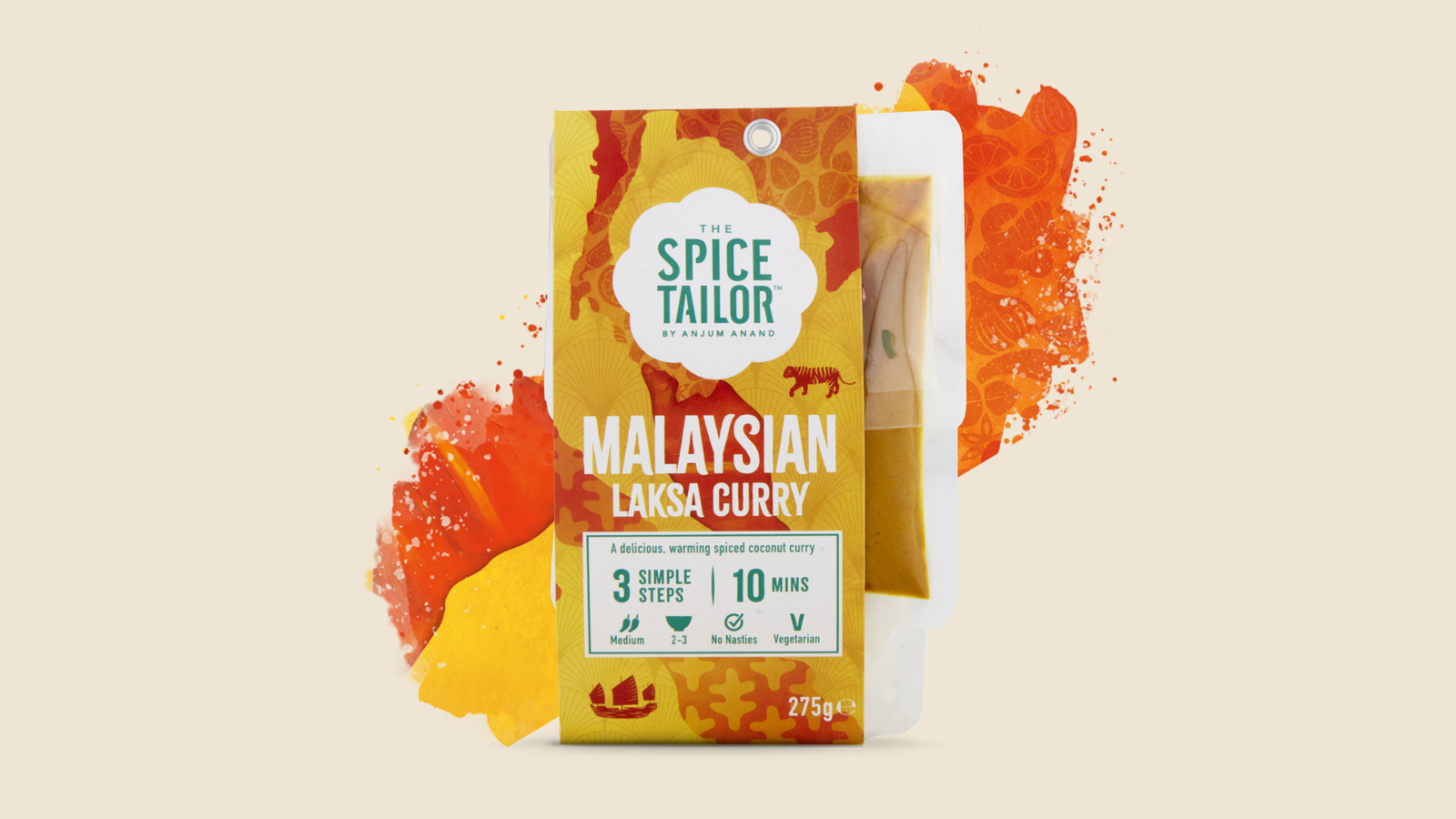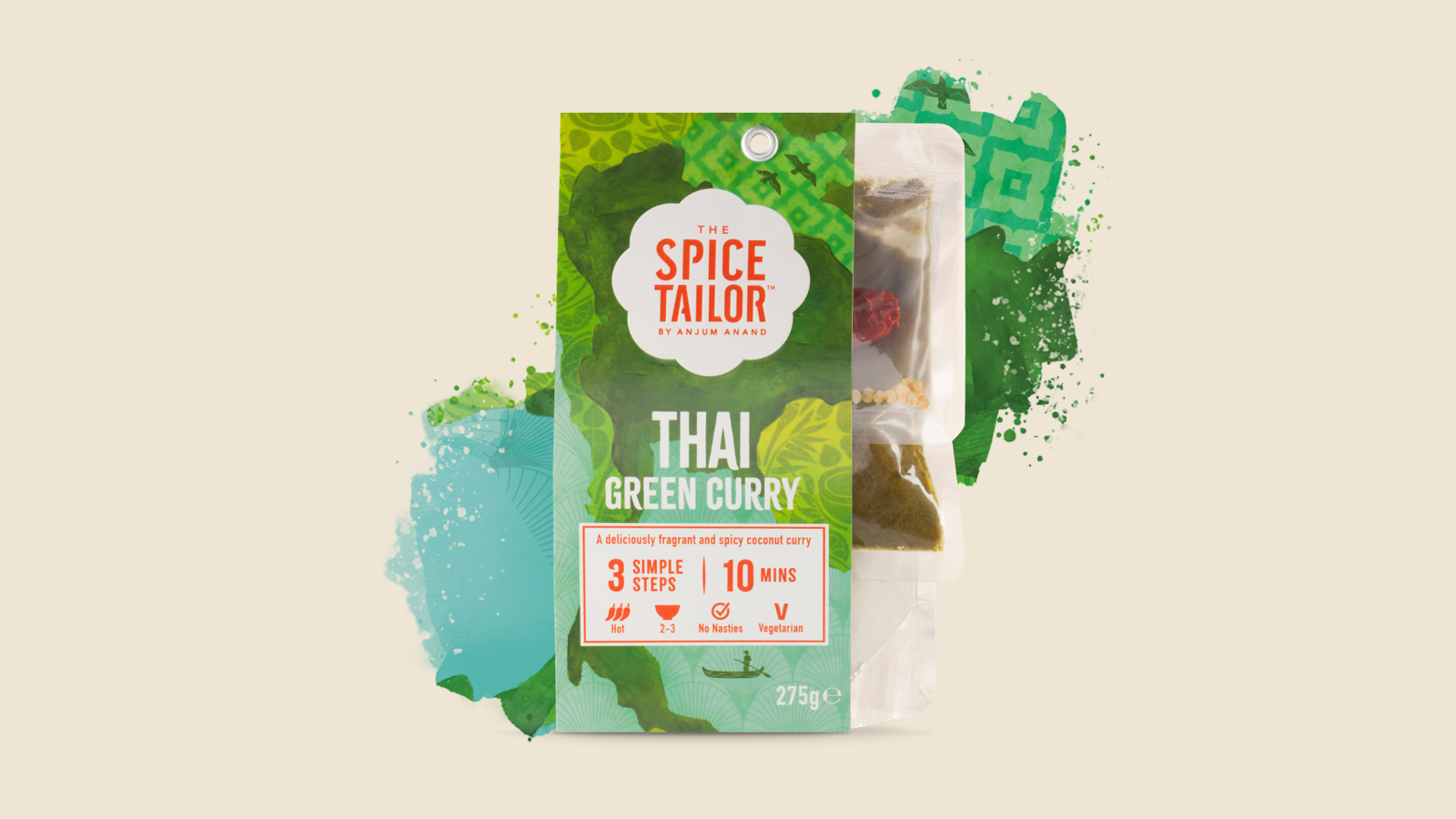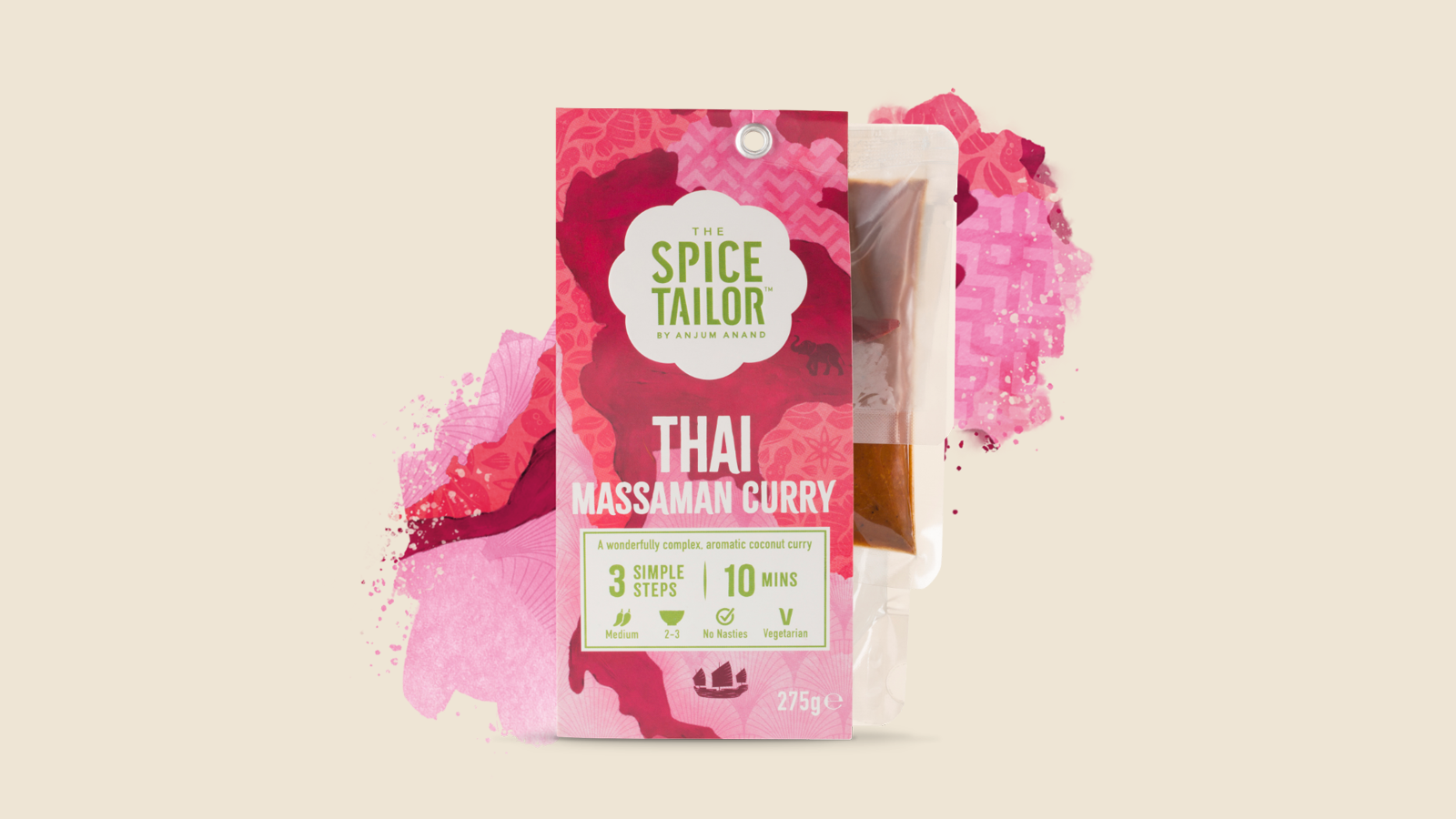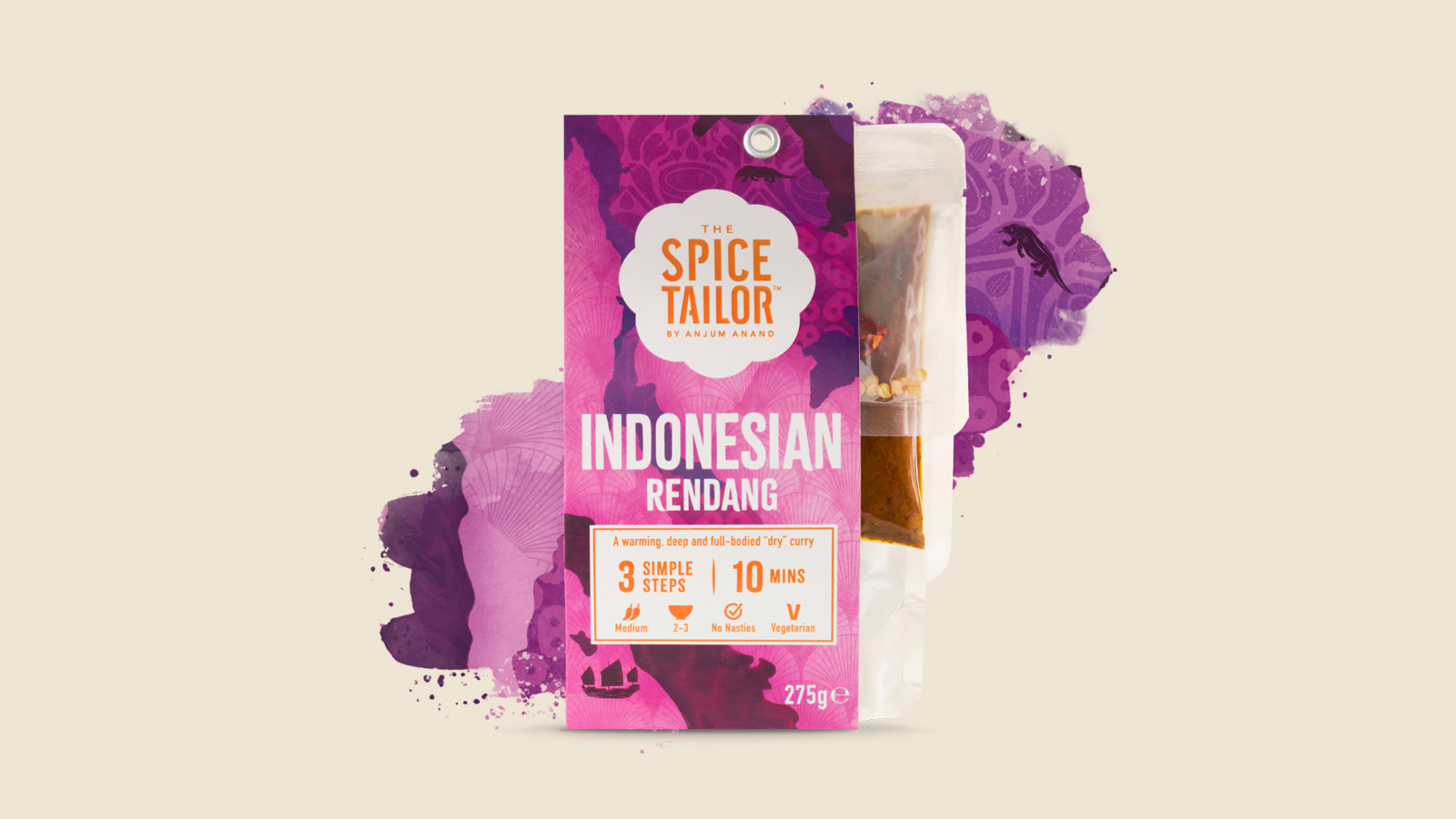
Asian Curry Kits
Indonesian Rendang
3 Simple Steps | Ready in 10 mins
Rendang is a true piece of culinary magic with a fascinating history. It is a delectable, rich and layered Indonesian dish, typically featuring slow-cooked, melt-in-the-mouth beef. Our Indonesian-style Rendang is flavoured with spices, roasted coconut and tamarind for mouth-watering results.
Delicious with chicken, mushrooms, tofu, aubergine, lamb or duck.

Origin Story
Rendang is held in high regard by Indonesia’s population and is one of their national dishes. It is thought to have originated from the Minangkabau people of West Sumatra. Some say that the characteristic deep, rich layers of flavour in rendang are a manifestation of the Minangkabau people’s philosophies of patience, wisdom and persistence.
Due to an influx of Indian traders throughout history, Indonesia became a hub for spice trade. Therefore, it is possible that the spice mix in rendang is influenced by Indian cuisine. The name of the dish stems from the word ‘merendang’, loosely meaning ‘to slow-roast’, as traditional versions of the dish, which used the meat of water buffalos, had to be slow-cooked to tenderise this tough meat. Consequently, the flavours of rendang lend themselves well to slow-cook cuts of beef.
Information
Sometimes the coconut sauce separates, do not let this worry you!
Cut your chosen protein or vegetables into generous pieces.
- Heat 1 tbsp oil in a small pan, add spices and cook for 20 seconds (use the chilli from the spice pouch for extra heat).
- Add the protein or vegetables and brown lightly. Add base sauce and simmer for 1-2 minutes.
- Stir in the coconut sauce and simmer for another 4-6 minutes, or until the meat or veg is cooked through. If required, reduce further to create a semi-dry curry finish.
Serves 2-3 with rice.
As appliances may vary, these are guidelines only.
Please ensure food is fully cooked and piping hot throughout before serving.
If you don’t like whole spices, grind these in a pestle and mortar and add them with the main sauce in step 3 (before final simmer). Alternatively, if left whole, remove them with a spoon before serving.
Use these handy tips to customise your dish:
- For a classic rendang, cook with cubes of beef for 40-45 minutes – or until the curry is semi-dry and the meat is tender – and finish with a handful of toasted, desiccated coconut. See full instructions on our website.
- For a delicious vegetarian version, cook with shitake mushrooms, fried tofu or aubergine.
- For added umami, stir in a teaspoon of fish sauce.
Coconut Cream (41%), Water, Sunflower Oil, Desiccated Coconut, Lemongrass (2%), Salt, Raw Sugar, Tamarind Paste (1%), Red Chilli, Dry Spices (1%), Sugar, Galangal Root (1%), Cumin Seeds, Ginger, Shallot Powder, Fennel Seeds, Garlic, Green Cardamom, Rice Flour, Turmeric Powder.
May also contain Celery, Milk, Mustard, Nuts and Sesame.
No artificial flavours, colours or preservatives.
Suitable for Vegetarians
Store in a cool, dry place. Once opened refrigerate and consume within 3 days.
Do not use if pouch is bloated or leaking.
Not suitable for microwave use.
Nutrition Information
| Typical Values | Per 100g |
|---|---|
| Energy | 101kJ/243kcal |
| Fat | 23g |
| of which saturates | 15g |
| Carbohydrate | 5.7g |
| of which sugars | 3.4g |
| Fibre | 2.7g |
| Protein | 2.4g |
| Salt | 1.5g |
